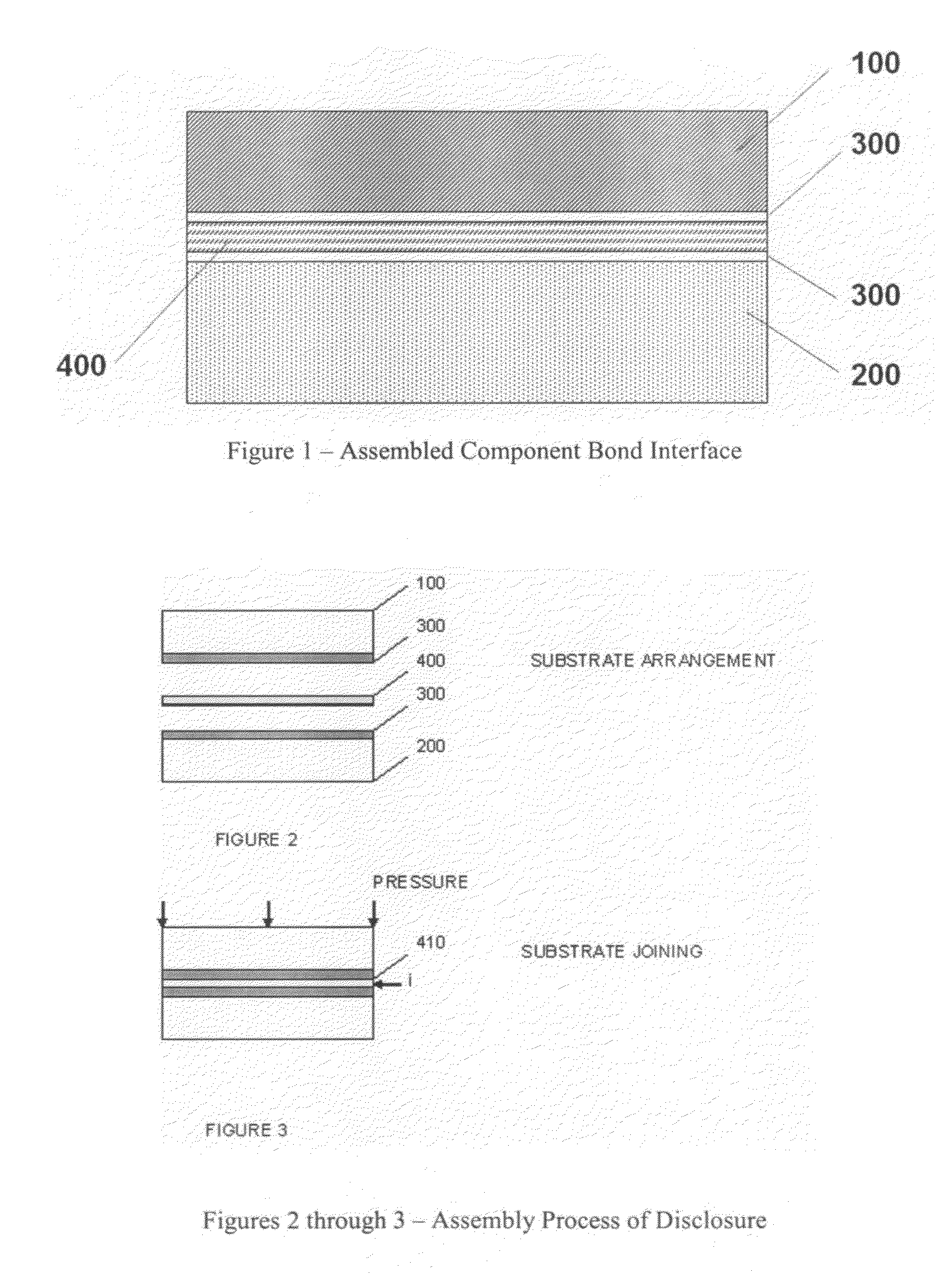Method for creating thermal bonds while minimizing heating of parts
- Summary
- Abstract
- Description
- Claims
- Application Information
AI Technical Summary
Benefits of technology
Problems solved by technology
Method used
Image
Examples
Embodiment Construction
[0019]FIG. 2 shows the two substrates 100 and 200 to be joined separated by a thin multi-layer nano-engineered foil of reactive metal 400. The reactive metal foils 400 are of Ni—Al or Ti—Al class of materials; examples of which are produced by Reactive NanoTechnologies, Hunt Valley, Md. The foils 400 can be made as preforms of various sizes and thickness; and are engineered to produce a non-explosive, nontoxic, single-use, highly controllable exothermic reaction that provides heat selectively to surfaces intimate to the foil 400. The reaction front travels along the foil 400 at speeds between 1- 30 m / sec, raising the local temperature from 25° C. to >1000° C. in 300 are driven by a reduction in chemical bond energy. With a small thermal pulse, atoms diffuse normal to the layering, and Al—Al and Ni—Ni bonds are exchanged for Al—Ni bonds. This local bond exchange produces a large quantity of heat that is conducted down the foil and facilitates more atomic mixing.
[0020]In FIG. 2, both ...
PUM
| Property | Measurement | Unit |
|---|---|---|
| Temperature | aaaaa | aaaaa |
| Thickness | aaaaa | aaaaa |
| Structure | aaaaa | aaaaa |
Abstract
Description
Claims
Application Information
 Login to View More
Login to View More - R&D
- Intellectual Property
- Life Sciences
- Materials
- Tech Scout
- Unparalleled Data Quality
- Higher Quality Content
- 60% Fewer Hallucinations
Browse by: Latest US Patents, China's latest patents, Technical Efficacy Thesaurus, Application Domain, Technology Topic, Popular Technical Reports.
© 2025 PatSnap. All rights reserved.Legal|Privacy policy|Modern Slavery Act Transparency Statement|Sitemap|About US| Contact US: help@patsnap.com


